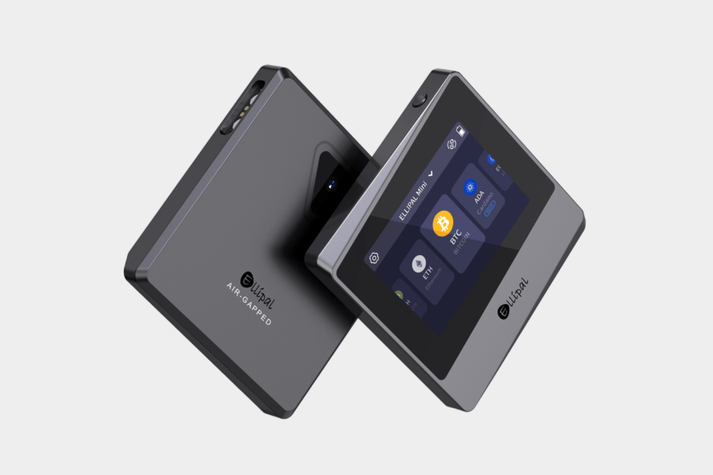Unlock the Secrets of Crypto Cold Wallets: Your Essential Guide to Secure Digital Wealth!
In the rapidly evolving world of cryptocurrency, where digital transactions are becoming the norm, the need for secure storage solutions has never been greater. With the rise in popularity of cryptocurrencies such as Bitcoin and Ethereum, the question of how to safely store these digital assets is paramount for both new and seasoned investors. Enter the crypto cold wallet—a secure method that isolates your digital wealth from potential online threats. By understanding what a crypto cold wallet is and why it’s crucial for protecting your investments, you can take significant steps toward safeguarding your financial future.

Understanding Crypto Cold Wallets
A crypto cold wallet, often referred to as cold storage, is a type of cryptocurrency wallet that is not connected to the internet. This fundamental difference sets it apart from hot wallets, which are online wallets that are more convenient for everyday transactions but less secure. Cold wallets are designed to store private keys offline, making them immune to hacking attempts, malware, and other online vulnerabilities. The basic principle of cold storage revolves around the idea that if your keys are not exposed to the internet, they cannot be stolen. This practice is particularly significant in the cryptocurrency ecosystem, where high-profile hacks and thefts have made headlines, highlighting the necessity of robust security measures for digital assets.
How Crypto Cold Wallets Work
Cold wallets function through the generation and storage of private keys in a secure environment. Private keys are cryptographic keys that allow users to access and manage their cryptocurrency holdings. In a cold wallet, these keys are generated and stored offline, either on a hardware device or in physical form, such as printed paper. There are several types of cold wallets available, including hardware wallets, which are physical devices designed specifically for securely storing cryptocurrencies, and paper wallets, which involve generating a QR code representing the private key and printing it out. The process of setting up a cold wallet typically involves creating a new wallet, generating a unique private key, and then securely storing that key in a way that prevents unauthorized access.
Benefits of Using a Crypto Cold Wallet
Using a crypto cold wallet comes with a plethora of benefits that appeal to anyone serious about cryptocurrency investment. One of the primary advantages is enhanced security; since cold wallets are offline, they are less susceptible to hacking and other cyber threats. This level of protection is especially crucial for long-term holders who want to safeguard their investments from the ever-present risk of online breaches. Additionally, cold wallets protect against physical theft and loss through careful management and secure storage practices. For instance, a friend of mine who is an avid crypto enthusiast swears by his hardware wallet. He recounts how he feels a sense of peace knowing that his investments are safely tucked away, far from prying eyes and online threats. Furthermore, cold wallets provide an effective means of offline storage, allowing users to hold their assets without the need for constant internet connectivity, which can also reduce the risk of accidental transactions.
Setting Up and Using a Crypto Cold Wallet
Setting up and using a crypto cold wallet is a straightforward process that can be broken down into several manageable steps. First, choose the type of cold wallet that best suits your needs—be it a hardware wallet or a paper wallet. Once you have your wallet, follow these steps: 1. **Create Your Wallet:** For hardware wallets, follow the manufacturer's instructions to initialize your device. For paper wallets, use a reliable source to generate your keys securely offline. 2. **Generate Your Private Key:** Ensure that the key is generated offline and not exposed to the internet. 3. **Securely Store Your Keys:** If you are using a paper wallet, store it in a safe place, such as a safe or a safety deposit box. For hardware wallets, keep the device secure and treat it like cash. 4. **Backup Your Wallet:** Create a backup of your wallet by writing down your recovery phrase or seed phrase, which will allow you to restore access to your funds if needed. 5. **Regularly Check Security Practices:** Stay informed about the latest security measures and best practices to ensure that your cold wallet remains secure over time. By following these steps and maintaining a vigilant approach to security, you can effectively safeguard your cryptocurrency investments.
Safeguarding Your Crypto Assets
In conclusion, understanding and utilizing a crypto cold wallet is essential for anyone looking to secure their digital wealth. The advantages of offline storage, enhanced security, and protection against hacking cannot be overstated. As the cryptocurrency landscape continues to evolve, so too should our approaches to safeguarding our assets. By considering the information presented in this guide, you can make informed decisions about your storage solutions and take proactive steps toward protecting your financial future in the world of cryptocurrency. Remember, the safety of your investments begins with you!












Comments